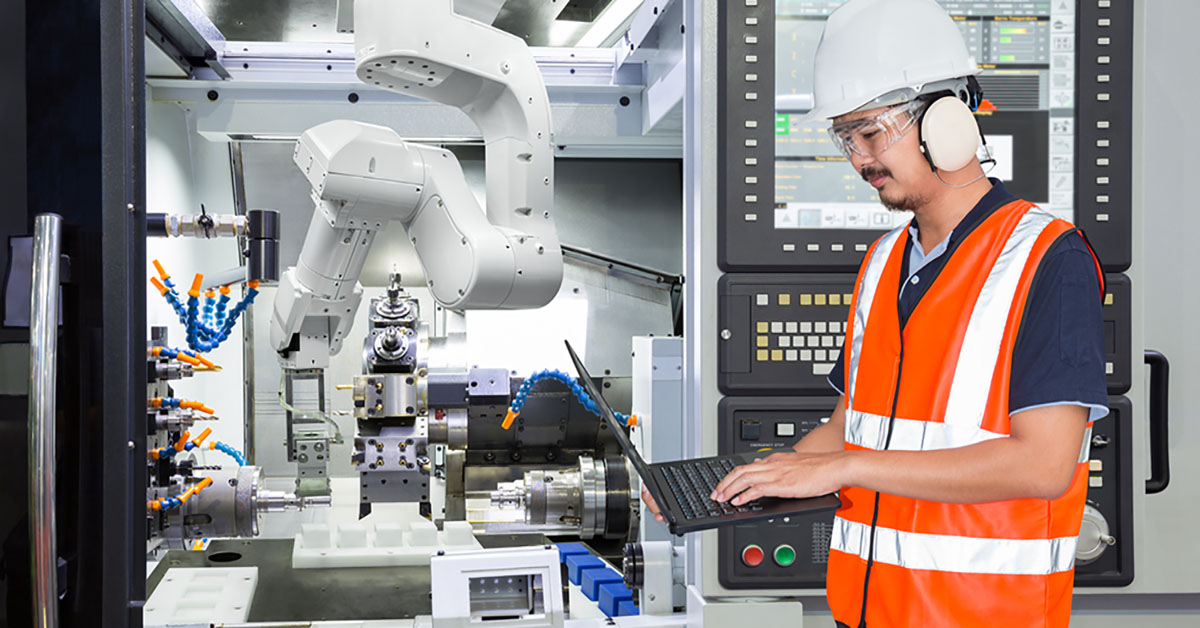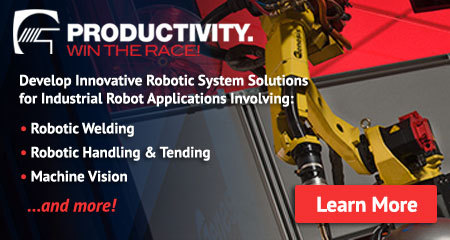6 Considerations When Selecting a Pre-Engineered Robot Workcell

Pre-engineered robotic workcells offer many benefits over custom robotic solutions for certain applications. With proven performance, pre-engineered workcells reliably deliver quick return on investment (ROI) and high levels of productivity. With nearly all of the design and engineering already completed, these workcells significantly reduce the delivery lead time and resources required for integration, minimizing the initial costs of robotic automation.
With so many different types of pre-engineered workcells available, it can be a challenge to determine which is the best for your application. When selecting a pre-engineered workcell, there are a few considerations to narrow down your options.
6 Considerations for Choosing a Pre-Engineered Robotic Workcell Design
To determine which pre-engineered workcell design will be most productive and cost-effective for your application, there are a few different things to consider.
1. Workcell Base (Positioner)
The workcell base determines how the part is presented to the robot. A number of options are available, including flat tables, three-axis turntables, head and tailstock configurations and more. Rotation of the part during the weld cycle will also play a major role in determining the positioner configuration.
2. Part Size and Weight
The size and weight of the parts will help determine the diameter of the work cell table, the required tool length, and the size of the workcell itself. This is a key consideration and will immediately narrow down your options.
3. Number of Stations
The number of stations your part requires will be a major determining factor in the design of the workcell that’s right for you. A low-volume part may only justify a single station workcell, yet if a customer has multiple low-volume parts, a dual station cell with two independent stations may work perfectly.
4. Robot Positioning
The unique dimensions of your part will determine which robot configuration will be best. Common options include rear-mounted and center-mounted robots, which provide different access to the part and utilize the workcell envelope differently.
5. Loading Type
How the part needs to be loaded into the workcell is another important consideration. Workcells typically come in single loading points or dual loading points depending on how the workcell fits within existing production flows on the customers manufacturing floor.
6. Number of Robots
Another key consideration is the number of robots required to service the part. Depending on the size, dimensions of the part and the number of welds, the workcell may have between one and four robots in various configurations to meet the customers cycle time requirements.
Pre-engineered workcells offer many benefits when compared to custom robot solutions. With lower integration requirements, pre-engineered robotic workcells deliver proven performance in a wide range of applications.
Selecting a pre-engineered workcell can be a challenge – there are many different design and application considerations. To aid you in your search, we’ve developed a robot workcell selector tool to simplify the process of finding a pre-engineered robot workcell.
Posted in Robotic Welding
